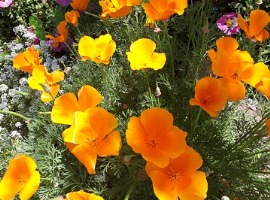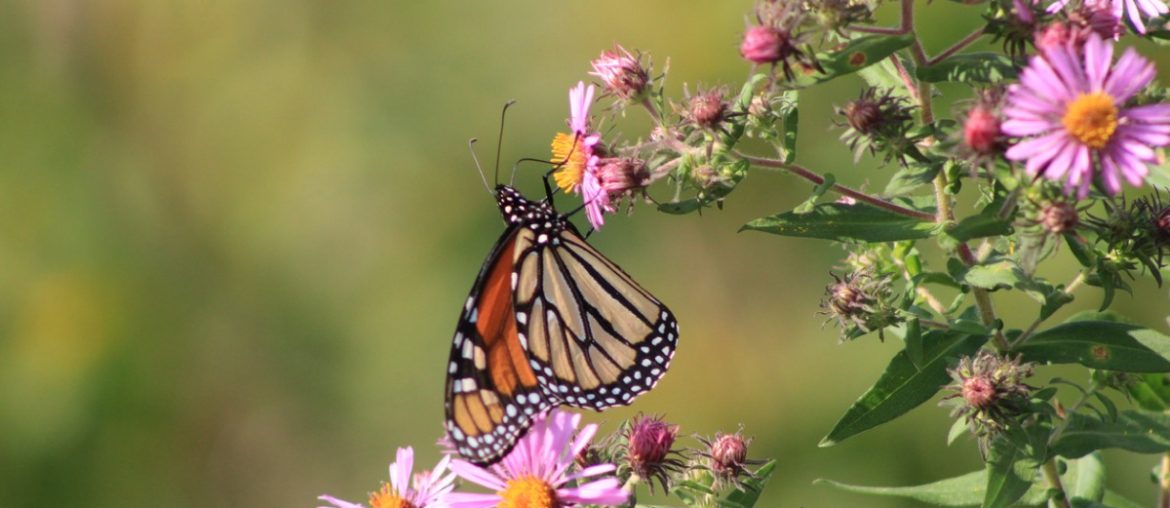The native plant movement grew out of an effort by conservationists to eliminate invasive species of plants spreading in local ecosystems and making it harder for native plants to survive. The use of non-native plants in landscaping has harmed biodiversity, especially when these species spread into natural areas around the homes that plant them.
Native plants support local wildlife and other plants in the ecosystem, achieving a balance where everything has a place to grow without competing with the flora and fauna around it. There are pros and cons to using native plants in landscaping. Though there is typically a diverse range of plant and flower species in a given area, some homeowners may feel limited by the variety. They could also be challenged by the way native plants grow in the wild. The flowers and bushes could spread outside the areas where they are expected to grow.
On the other hand, native plants thrive in the area without human intervention. They are not high maintenance, do not require watering or fertilizing, and often choke out unwanted weeds. Here is a closer look at the native plant movement and how it compares to the use of non-native species on lawns and in gardens.
Native vs. Non-native Plant Species

Non-native plants are plants that do not grow naturally in an area. These exotic species only enter an ecosystem with human intervention. Homeowners and landscapers bring these plants, flowers, and trees to the area by using them in their gardens or lawns.
However, they can potentially become invasive. This occurs when they spread beyond the property and take root in the local ecosystem. These invaders can compete with native plants, potentially driving them out of the area.
If their spread is dramatic enough, these plants can affect the entire ecosystem. For example, insects and animals that rely on specific native plants for food or shelter will struggle if invasive species overtake the habitat.
The native plant movement seeks to avoid this invasive effect by relying on species that already grow in the local ecosystems. Not only will these plants coexist with others in the area, but they are typically easier to maintain.
Both homeowners and landscapers can take advantage of the native plant movement to create low-maintenance, environmentally friendly lawns and gardens.
The Benefits of Native Plants

Native plants have evolved to thrive in their environment without any outside help. Homeowners can avoid using fertilizers, weed killers, and other chemicals that could harm the environment. Because they thrive without chemicals and won’t interfere with natural ecosystems if they spread beyond your property, native plants are almost always a more eco-friendly option.
They are also more cost-effective because they do not require intensive maintenance and are more likely to survive for years, reducing the need to purchase replacements.
Here is a closer look at the different benefits of relying on native plants.
Lower Maintenance
Native plants thrive in the environment already. They are typically drought-resistant and will not get choked out by weeds or other plants. Also, they can handle the changing seasons and will grow back year after year automatically without the need for replanting.
If they do not employ pros to handle the job, Americans spend up to 70 hours per year working on home landscaping, so low-maintenance plants can save a lot of time.
Finally, exotic plants may attract new pests to your property. Native plants are already a part of the ecosystem balance, so they exist in harmony with the creatures in the area.
Use Less Water
Because they survive naturally in your climate, native plants can live with less watering than their foreign counterparts. They can survive without a built-in irrigation system, sprinklers, or hand watering.
Not only are these hardier species time savers, but they also lower your water costs and help with water conservation. The average household uses about 30% of its water supply for outdoor irrigation. Limiting the need for this can help you save a significant amount on utility bills. It can also be helpful if there are watering restrictions or shortages in your area.
Healthy for Wildlife
Native plants are part of an existing food web for an ecosystem. In most cases, multiple species rely directly or indirectly on plants for sustenance. For example, insects may get pollen from a certain species of flower. Their population thrives because of the presence of this plant.
In turn, a species of bird may use the insect as its primary food source. If the native flower gets pushed out by an invasive species, both insects and birds could suffer as a result.
This dynamic is repeated for all types of wildlife in an ecosystem.
Protecting Natural Habitat
Pollen and seeds that plants use to maintain their species and spread through an ecosystem will typically move beyond your property. If you have non-native species, they may take root in the natural areas around your home. If they are invasive, this movement could alter the ecosystem.
Native plants, however, will not cause such changes. If they spread beyond your property, they will simply be used by the other creatures in the ecosystem without upsetting the balance.
Tips for Landscaping With Native Plants

Native landscaping is ideal for homeowners and professionals who want to make a property more earth-friendly without sacrificing aesthetics. In addition to requiring less maintenance and care, these plants won’t interfere with the overall ecosystem if they spread beyond the property.
Homeowners and pros can use native plants in a permaculture approach to landscaping. Since these plants thrive in the local climate and adjust to the different seasons, they will return year after year, reducing the need for additional landscaping investments.
Landscapers can use native plants to increase customer satisfaction. Most homeowners will be happy with the lasting results and limited need for maintenance and individual investment. However, businesses will need to manage client landscaping projects with native plant care in mind, with a focus on debris and invasive species removal instead of replanting and fertilizing.
Here are additional tips for embracing the native plant movement.
Learn What Plants May Be Invasive
Some exotic plants do not spread, or they only spread with the help of insects or other animals that are not within your ecosystem. Though such plants may require more maintenance and watering, they will not damage the ecosystem because they won’t spread beyond the space where you plant them.
Other plants spread rapidly, choking out native species. An example is Japanese honeysuckle. This prolific bush was first used in landscaping and to help control erosion on Long Island, New York. However, it quickly spread because birds ate its small fruit, spreading the seeds all over the island.
You can research invasive species in your area to see which plants to avoid.
Learn What Plants Are Native
The next step is to learn which plants are native to your ecosystem. For example, different wildflowers thrive in each region. By selecting the right varieties, you can create landscaping that fits within the local food web, requires minimal maintenance, and will grow back year after year.
Some species are very localized, growing in only a specific neighborhood. In addition to researching online and with local plant guides, you can look at which plants grow in the natural areas around your home and how widespread they are.
Consider Alternatives to a Grass Lawn
Turf lawns have some benefits. If they are healthy, they do not allow invasive weeds to take root. However, maintaining the necessary health may require chemical weed killers, fertilizers, and aggressive watering regimens.
With the help of professional landscapers, you can find alternative ground-cover species. For example, in some parts of the country, clover can serve as a low-maintenance alternative to turf grass. Other grass substitutes include mosses, native meadow grasses, and low-growing wildflowers.
All grass alternatives and native plants allow landscapers and homeowners to create attractive, low-maintenance lawns and gardens that do not require chemical treatments or extensive watering and will not interfere with the surrounding ecosystems.




